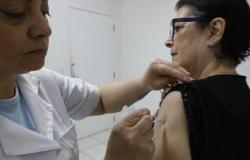Einstein Agencyi
Einstein Agency https://istoe.com.br/autor/agencia-einstein/
03/18/2024 – 8:15
Contrary to the global downward trend in the number of suicides, Brazil recorded a 3.7% increase in suicide rates and a 21% increase in cases of self-mutilation between 2011 and 2022. Despite the problem being more common in elderly people, the increase was more significant among young people aged 10 to 24: there was a 6% increase in suicide rates and a 29% increase in self-harm rates in the period analyzed. While the global reduction in cases was 36%, in the Americas the increase was 17%.
The finding comes from a broad study carried out by the Center for Data and Knowledge Integration for Health (Cidacs), at Fiocuz Bahia, in collaboration with researchers from Harvard, in the United States. To reach the results, the researchers analyzed more than 1 million data available in three public databases: the Mortality Information System (SIM), Hospital Information System (SIH) and the Notifiable Diseases Information System (Sinan). The results were published in The Lancet Regional Health – Americas.
According to psychologist Flávia Jôse Alves, Cidacs researcher responsible for the study, this work is part of the scope of larger research, which evaluates mental health information as a whole. “Suicide rates have decreased globally, but in Brazil and Latin America they have increased. We wanted to try to understand how this has been happening and we decided to cross-reference the information from the three public databases, which are completely independent and do not talk to each other,” she explained.
After the statistical analysis, one of the data that caught the researcher’s attention is that the suicide rates recorded in the period have maintained a constant growth and there was no considerable increase or peak during the Covid-19 pandemic, contrary to what would be expected. because of the increase in cases involving mental health problems. “Suicide reporting has remained a persistent trend over time,” she said.
Another fact that drew attention is that there was an increase in records in all groups (indigenous, brown, Asian, black and white), but the number of notifications and deaths was higher among indigenous people and, among them, there was a lower rate of hospitalizations. In the researcher’s assessment, this suggests that there is a lack of access to urgent and emergency services, which could delay interventions.
Why increase among young people?
Regarding the increase in cases in increasingly younger people, Alves said that the research did not evaluate the reasons, but she lists some hypotheses that could explain it: among them are socioeconomic factors, which directly impact access to basic health care, especially mental health – this includes everything from the lack of specialist doctors in the network to the resistance to seeking help when the problem involves mental health. Furthermore, social isolation is also a worrying factor.
Psychiatrist Elton Kanomata, from Hospital Israelita Albert Einstein, agrees and highlights that the lack of access to specialist doctors is a serious problem. “There is still a shortage of psychiatrists in many regions of Brazil and, apart from the capitals and large centers, there is a huge shortage of specialists, which makes it difficult to properly manage cases so that they do not evolve into great psychological suffering and, consequently, , suicide”, he assessed.
Kanomata also highlighted that the more significant increase in cases in the younger age group is something that has been routinely observed by colleagues who work in mental health. “These are more current generations, very different from the previous ones. These are young people who had access to resources, information, education, but have a more immediate profile. They tend to have a lower threshold, a low tolerance for frustration, and this could also be one of the reasons”, suggested the doctor.
Furthermore, Kanomata remembers other risk factors that may have increased over time – including stress levels and current self-demands. “In the past, there was no talk of burnout and today it is a disorder recognized by the World Health Organization in ICD 11. We are living in a time when perhaps these current generations are not able to deal with the increase in stress”, he says.
Increase in self-harm
The significant number of records of self-harm among young people also drew attention to the study. According to Kanomata, this behavior was uncommon decades ago, but today it is much more common to be seen at any level of medical care – both outpatient and emergency, and even in hospitalizations.
This result catches our attention because it may reflect the issue of this young man wanting to copy the other’s behavior. We are aware of videos on social media of people talking about self-harm and this causes a herd effect. It does not necessarily mean that that young person has a mental disorder, but he copies the act of mutilating himself as a form of relief from some suffering”, explained the psychiatrist.
Kanomata emphasizes, however, that self-harm does not necessarily imply suicide. The two are different behaviors and it is not possible to make a connection, stating that the increase in cases of self-harm would be reflected in the increase in suicides. According to the Einstein psychiatrist, in suicide the person has the intention of taking their own life, even if there is a minimum of intentionality, while in self-mutilation there is no such objective.
“Self-injury is much more linked to a type of behavior, to alleviate psychological and emotional suffering that has been trapped, often due to life’s stresses. After the act, the person feels more relieved. Of course, if a person is in distress to the point of self-harm, this may increase the risk of that person having a mental disorder. And consequently, if it is not treated, it gets worse and the person considers attempting suicide as a solution. But it is not possible to make this direct link”, she highlighted.
Researcher Alves makes a reservation about two factors in the study that could interfere with the result: the first is that the three databases used are independent and, therefore, there is a risk of overlapping cases. She explains, for example, that there is a record of a case of self-harm and, later on, that same person is hospitalized. As the systems are independent, when this person was hospitalized, a new record was generated in the hospitalization system.
Another factor that may limit the results is that, only from 2011 onwards, compulsory notification of self-harm in general began to appear and, in the period analyzed, there were reminders from the government ratifying the issue of compulsory notification. According to Alves, as there were no records previously, it is natural that there would be an increase in cases. Furthermore, over the years, with team training and more information about the systems, it was expected that there would also be a tendency for records to increase.
Kanomata agrees with the reservation, but says that despite this, cases may still be underreported. “There is a difference between it being mandatory and actually being done throughout the health system. This was not something that was embraced and put into practice immediately and systematically from 2011 onwards,” he said.
For the psychiatrist, the results of this work reinforce the need for public health policies that can minimize the risk of suicide – and one way would be to increase the supply of services with mental health professionals. “Access to health in general is not homogeneous throughout Brazil, and access to mental health is no different. An alternative would be to implement telemedicine services, for example, allowing the specialist to reach small towns, more distant regions, where face-to-face consultation with a psychiatrist ends up not being possible,” he said.
How to identify someone at risk?
The psychiatrist says that it is often possible to identify signs that indicate that a person is in intense psychological distress, including: a more saddened mood, apathy, decreased interests, lack of will, energy, willingness to carry out basic activities , impairments in self-care, reduced social contact or isolation, changes in appetite and sleep, more pessimistic speech in relation to life and the future.
These are details that, if they appear in a sustained way and become constant, deserve attention, so that the person seeks professionals in the field of mental health, both psychiatrists and psychologists”, concluded the doctor.
Seek help
If you or someone you know needs emotional support, contact the Life Valorization Center (CVV) by calling 188. The call is free. Furthermore, the Mapa da Saúde Mental website can be used to find a service closer to you, providing information about free or low-cost care.
The Unified Health System (SUS) also offers the Psychosocial Care Network (RAPS) through the Psychosocial Care Centers (CAPS) that provide reception for those who need it.
Source: Einstein Agency
The post Suicide and self-harm rates among children and young people increase in Brazil appeared first on Agência Einstein – ROSA.
Follow her That is at the Google News and receive alerts about the main news
Tags: Suicide selfharm rates among children young people increase Brazil
--





